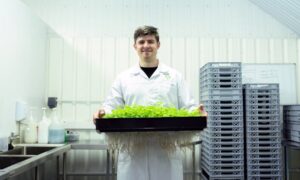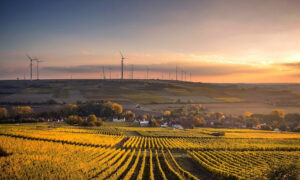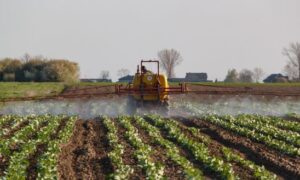In the vast expanse of agriculture, where challenges range from unpredictable weather patterns to the constant battle against pests and diseases, the role of technology has become increasingly pivotal. Agricultural Technology, commonly known as AgTech, is not just a buzzword but a transformative force reshaping the way we cultivate and harvest our crops. In this comprehensive exploration, we will delve into the groundbreaking AgTech solutions that are revolutionizing the agricultural sector, bringing forth new possibilities for farmers and stakeholders alike.
Precision Farming: Navigating Fields with Data
Precision farming stands as a testament to the marriage of technology and agriculture, employing advanced tools such as GPS, sensors, and data analytics. This sophisticated combination allows farmers to make well-informed decisions regarding planting, irrigation, and harvesting, ultimately leading to increased yields and more efficient resource utilization.
- GPS Technology: Mapping the Future
Global Positioning System (GPS) technology has transcended its initial purpose and found a home in agriculture. By precisely mapping fields, farmers can create intricate planting patterns, optimize resource deployment, and enhance overall farm management.
- Sensors and IoT: Real-Time Insights
The integration of smart sensors and Internet of Things (IoT) devices provides farmers with real-time data on crucial parameters like soil health, moisture levels, and crop conditions. Armed with this information, farmers can adjust their strategies, ensuring optimal crop quality and resource efficiency.
Drones in Agriculture: Eyes in the Sky
Unmanned Aerial Vehicles (UAVs) or drones have emerged as invaluable assets in agriculture. Beyond their role as sophisticated aerial cameras, drones equipped with sensors and spraying mechanisms offer multifaceted benefits, from crop monitoring to precision spraying.
- Crop Monitoring: A Bird’s-Eye View
Drones enable efficient monitoring of expansive agricultural areas, capturing high-resolution images that unveil stress points or signs of disease. This early detection allows for timely intervention, preventing the spread of diseases and ensuring crop health.
- Precision Spraying: Targeted Solutions
Equipped with spraying mechanisms, drones can precisely apply fertilizers or pesticides to specific areas. This targeted approach not only minimizes the use of chemicals but also reduces environmental impact and minimizes the potential harm to non-targeted areas.
Artificial Intelligence (AI) in Agriculture: Cultivating Intelligence
Artificial Intelligence is the driving force behind data-driven decision-making in agriculture. Machine learning algorithms process diverse datasets, including weather patterns, soil conditions, and historical crop performance, to provide farmers with actionable insights.
- Crop Prediction: Forecasting Yields
AI algorithms analyze historical data to predict crop yields, empowering farmers to plan effectively and make informed decisions regarding planting and harvesting schedules. This proactive approach enhances overall farm management and productivity.
- Pest and Disease Identification: Visionary Solutions
AI-powered image recognition technology plays a crucial role in identifying pests and diseases. By swiftly recognizing and diagnosing issues, farmers can take prompt action, preventing potential damage and ensuring the health of their crops.
Vertical Farming: Cultivating in New Dimensions
Vertical farming represents a paradigm shift in agriculture, embracing innovation in both structure and methodology. This technique involves growing crops in vertically stacked layers, often within controlled environments, presenting solutions to challenges related to land scarcity and seasonal limitations.
- Controlled Environment Agriculture (CEA): Orchestrating Optimal Growth
Vertical farming relies on Controlled Environment Agriculture (CEA), where factors such as light, temperature, and humidity are meticulously controlled. This ensures optimal growing conditions, allowing for year-round crop production regardless of external environmental factors.
- Sustainability: A Green Revolution
In addition to maximizing space utilization, vertical farming significantly reduces the environmental impact associated with traditional agriculture. By minimizing the use of land, water, and pesticides, this approach aligns with the growing emphasis on sustainability in modern farming practices.
Robotics in Agriculture: Automating the Fields
The integration of robotics into agriculture brings automation to labor-intensive tasks, offering efficiency gains and reducing dependence on manual labor. From autonomous tractors to harvesting robots, these technological marvels are reshaping the landscape of farm operations.
- Autonomous Tractors: Navigating Fields of Tomorrow
Self-driving tractors equipped with GPS and sensors navigate fields autonomously, optimizing routes and performing tasks with precision. This not only improves the efficiency of farming operations but also minimizes the need for human intervention.
- Harvesting Robots: Precision in Plucking
Harvesting robots are designed to identify ripe crops, pick them with precision, and sort them based on quality. This automation not only alleviates the labor burden on farmers but also ensures a faster and more efficient harvest, contributing to overall productivity.
Conclusion
AgTech stands as a beacon of hope for addressing the myriad challenges faced in agriculture. From precision farming and drones to artificial intelligence, vertical farming, and robotics, these cutting-edge technologies are not just enhancing productivity but also paving the way for a more sustainable and resilient agricultural future. As we continue to witness the evolution of AgTech, it becomes imperative for farmers and stakeholders to embrace these innovations and harness their full potential. By doing so, we can collectively contribute to a greener, more efficient, and sustainable future for global agriculture.



































